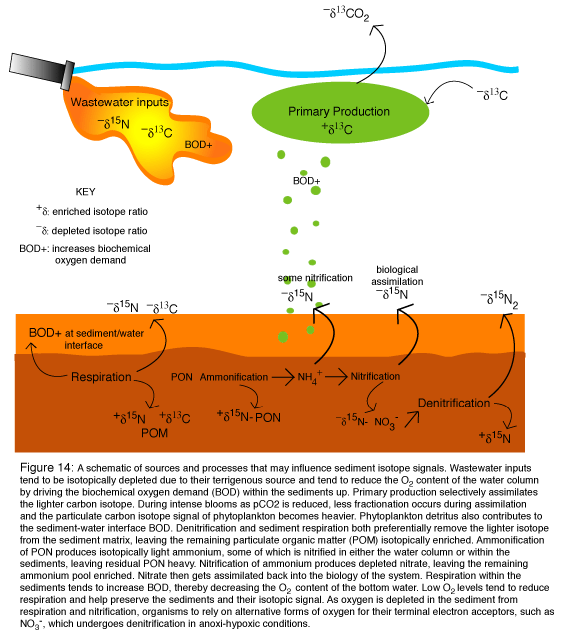
A history of sewage induced effects in Jamaica Bay was reconstructed from two sediment cores using natural carbon and nitrogen isotope abundances. Total organic carbon and total nitrogen peaked together during high sewage inputs in the late-1960's (7.5% and 0.85%) mid-1980's (6.5% and 0.8%), respectively. C/N profiles were associated with low ratios during corresponding sewage peaks throughout both core profiles. d15N and d13C isotopic ratios become more depleted when high levels of sewage inputs were suspected. Analysis of C/N and d15N and d13C ratios suggests that diagenetic processing may significantly affect the N isotope signal during periods of low sewage inputs. Similar analysis suggests that little C degradation occurs. It remains unclear why the more recent core is significantly isotopically enriched with respect to C isotopes. C/N ratios and ancillary data on Jamaica Bay suggest that primary productivity could be seriously impeded by sewage events in the bay. A two end-member mixing model may be inappropriate for determining sediment source origins in this scenario due to the varied biogeochemical processes that contribute to the sediment signal and alter source isotopic compositions. Together, the data have serious implications for understanding effects of combined sewer overflow events and sewage loading in estuarine environments.

Go to Science Research Projects.
Go to Learning Objectives of Research Project.
Return to E&ESJ home page.
Last updated: 18 December 2000, KAK.